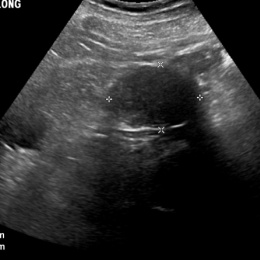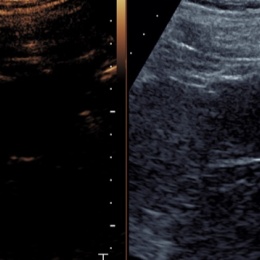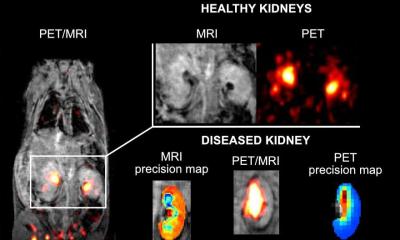Article • CEUS & the kidneys
Contrast-enhanced ultrasound for renal masses
Contrast enhanced ultrasound (CEUS) has proved in trials to be more accurate than computed tomography and MRI and can help eliminate the need for unnecessary biopsies and surgery.
Report: Mark Nicholls
Using CEUS, we can confirm a mass is benign without a biopsy or surgery
Richard Barr
Led by Dr Richard Barr, Professor of Radiology at Northeast Ohio Medical University, the team has been using CEUS since 1999 and, for the specific study, focused on 721 patients referred for contrast-enhanced ultrasound with 1018 indeterminate renal masses between then and 2010. Following CEUS examinations, 367 of the patients were spared biopsy, surgery or close follow-up. ‘Because all malignant renal masses have blood flow, if no enhancement is present, they are benign 100%,’ Barr explained. ‘If we exclude vascular abnormalities and infections – usually identified clinically – most masses with blood flow are malignant. Therefore, by using CEUS, we can confirm a mass is benign without a biopsy or surgery.’

CEUS uses liquid suspensions of biocompatible microbubbles, which are slightly smaller than red blood cells, and are injected into an arm vein during an ultrasound scan. Each has a unique sonographic characteristic, enabling radiologists to use specific ultrasound contrast to see a contrast-only image, as well as a standard image at the same time. CEUS does not expose patients to ionising radiation and the microbubbles present no risk of kidney or liver damage.
Indeterminate renal masses are a common clinical problem with more than half of patients aged over 50 estimated to have at least one renal mass. Many renal masses are found incidentally during an imaging examination and most are benign simple cysts. The purpose of the research, ‘Evaluation of Indeterminate Renal Masses with Contrast-enhanced US: A Diagnostic Performance Study’, was to determine the use of contrast material-enhanced ultrasonography in the characterisation of indeterminate renal masses.
With 100% sensitivity, the results offered a conclusion that CEUS evaluation is a highly-sensitive and specific method for characterisation of indeterminate renal masses. ‘Because we can 100% confirm a lesion is benign, no surgery or biopsy is needed. That is the big benefit for patients,’ Barr added. ‘We have followed our first 1,018 cases now for 10 years and none of the renal masses without blood flow became malignant. Also, positive patients can be treated and not watched to see if lesions grow. As for clinicians, they can be confident in the diagnosis and not have to be concerned about following up the patient.’
In terms of diagnosis, he said they can predict with high probability if a mass is benign or malignant, though acknowledged that in terms of specific diagnoses more work is needed.
Overall, the Northeast Ohio team has collected an additional 2,000 cases and is working on additional features to determine whether they can provide a histologic diagnosis of the malignancies. ‘Some renal cancers are very slow growing,’ Barr noted. ‘If we can select these out, older patients may not need to have surgery or treatment but just be watched to make sure the lesion is not growing.’
With findings that show CEUS is a ‘very robust technique with an extremely high predictive value,’ Barr concluded: ‘CEUS, which is available worldwide, is more accurate than CT and MRI because we have a contrast only image, so we can see very small amounts of contrast. Ultrasound also has a much smaller slice thickness,’ Barr pointed out, ‘so we can identify 1mm enhancing nodules within a renal mass. CEUS can be used in patients with renal failure.’
Profile:
Dr Richard Barr is President of Radiology Consultants Inc. in Ohio and a Professor of Radiology at North-eastern Ohio Medical University, Youngstown, Ohio. The research is performed at Southwoods Imaging in Youngstown, Ohio. His more than 100 scientific articles show particular interests in breast imaging, contrast-enhanced ultrasound, and elastography. He has also published two elastography books, plus several book chapters. From January, he will be the editor-in-chief of the Journal of Ultrasound in Medicine.
11.11.2018















